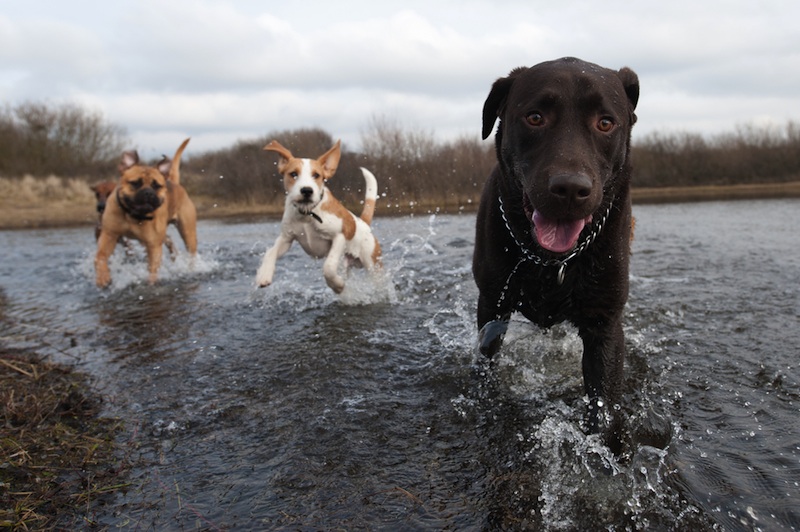Dogs Hear 'Get the Ball!' Differently Than You

Dogs can learn the names of objects, but they likely focus on different features when learning words than humans do, new research finds.
When toddlers learn words for objects, they focus on shape. This means that once your kid gets that a tennis ball is called a "ball," they're quick to realize the same word applies to beach balls, basketballs and golf balls.
Kids wouldn't, however, assume that a stuffed teddy bear is a ball just because it has the same fuzzy texture as a tennis ball. Nor would they call something a ball just because it is the same size as the balls they are familiar with. This tendency to categorize objects based on shape above other features is called "shape bias."
University of Lincoln researcher Emile van der Zee and his colleagues were interested in finding out whether dogs have this shape bias, too. Plenty of evidence suggests dogs can learn words; Rico, a Border Collie that died in 2008, reportedly understood more than 200 simple words. An investigation of Rico published in 2004 in the journal Science found that he did indeed have an extensive vocabulary. Other Border Collies have been reported to have similar talents. [What Your Dog's Breed Says About You]
What's not clear is whether dogs comprehend words the same way humans do. To find out, van der Zee and his colleagues tested a 5-year-old Border Collie named Gable. They created objects of various shapes and textures and taught Gable made-up words such as "dax" to describe them.
The researchers found that when asked to go retrieve a specific object, Gable generalized the word based on size. When given a choice between a dax-size object and a larger object and told to "get the dax," Gable picked the dax-size object every time, regardless of texture or shape.
A second experiment gave Gable the choice between an object shaped like the one he was asked for and an object of the same size. A human would go for the similar shape, but Gable again based his decisions on size.
Sign up for the Live Science daily newsletter now
Get the world’s most fascinating discoveries delivered straight to your inbox.
When given a toy for several months and then tested, Gable began to associate the word for that object with texture more than size, the researchers found. Clearly, the dog's word learning works very differently than it does in humans, they conclude today (Nov. 21) in the open-access journal PLoS ONE.
"Where shape matters for us, size or texture matters more for your dog," the researchers wrote. "This study shows for the first time that there is a qualitative difference in word comprehension in the dog compared to word comprehension in humans."
Follow Stephanie Pappas on Twitter @sipappas or LiveScience @livescience. We're also on Facebook & Google+.

Stephanie Pappas is a contributing writer for Live Science, covering topics ranging from geoscience to archaeology to the human brain and behavior. She was previously a senior writer for Live Science but is now a freelancer based in Denver, Colorado, and regularly contributes to Scientific American and The Monitor, the monthly magazine of the American Psychological Association. Stephanie received a bachelor's degree in psychology from the University of South Carolina and a graduate certificate in science communication from the University of California, Santa Cruz.









